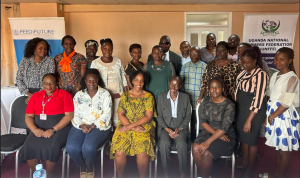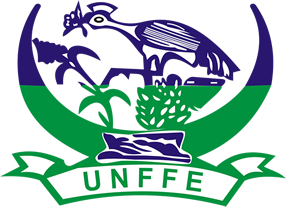The ongoing exercise of profiling largescale farmers and farms is one of the key roles UNFFE was tasked to take lead on under the Ministry of Agriculture, Animal Industry & Fisheries (MAAIF) and Uganda National Farmers Federation (UNFFE) partnership. UNFFE is to support the implementation of some tasks and activities within the framework of the Agro-industrialization agenda and the Ministry’s Value Chain Development Strategy. The activities include Profiling Large-scale farmers (50 acres of land and above), developing content (protocols and processes) for farmer Extension/Education focusing on the Parish Development Model-PDM priority commodities; creating a database of large-scale farmers per district in accordance with MAAIF Strategic Plan; mobilizing farmers through Expos and Dialogues for increased production and productivity; collecting Enterprise-based Production & Marketing Data for determining Production Trends of Food & Feed Nutritional Crops; organizing National and Regional Agricultural Shows for farmer education, uptake of research products & innovations, technology transfer, exposure, and market linkages.
The main objective of this assignment was to support the Ministry of Agriculture, Animal Industry & Fisheries with the development of training/education/extension content & materials and disseminate them through platforms including Barazas and agricultural shows, and generating data on production and trends.
A total of 1,306 farmers from West Nile, Acholi, Lango, and Teso Subregions have been profiled (compared to the number of ‘large scale farmers’ that had been submitted by the Districts- which was almost double this figure). 95.67 percent of the largescale farms were owned by individuals, and only 3.74 percent were owned by institutions. The institutions included Religious especially churches, Schools, Universities, Farmer Associations/ Cooperatives, and farmer groups.
The districts covered, so far include; Moyo, Obongi, Yumbe, Koboko, Maracha, Terego, Arua, Arua City, Madi-Okollo, Zombo, Nebbi, Packwach, Lira, Lira City, Oyam, Kole Otuke, Alebtong, Apac, Kwania, Dokolo, Amolatar, Gulu, Gulu City, Lamwo, Omoro, Nwoya, Adjumani, Kitgum, Amuru, Pader Kaberamado, Kalaki, Katakwi, Ngora, Bukedea, Soroti, Soroti City, Amuria, Kapelebyong, Kumi, and Serere. Each of these districts had an average of 8 to 14 sub-counties including town councils.
- There is more land under-utilized compared to the utilized one, in the four sub-regions covered. If this land cannot be put under agricultural production, there is a need to explore other possibilities and ways of making it add to the socioeconomic development of the regions and the country at large (e.g. commercial forestry?)
- Large-scale farmers are potentially key transformational models that can be relied upon to cause a change in mindset and production levels in communities. They can be a strong basis for increased technology transfer to other farmers who congregate around them to form a strong nucleus.
- Government should consider holding discussions with the profiled farmers and their respective district leaders and technical officials to agree and prioritize enterprises that can be supported for large-scale commercial production, based on the country’s strategic commodities. This will provide a launchpad for Agricultural Industrialization. Other facilities can then be planned accordingly to address storage, value addition, and marketing.





